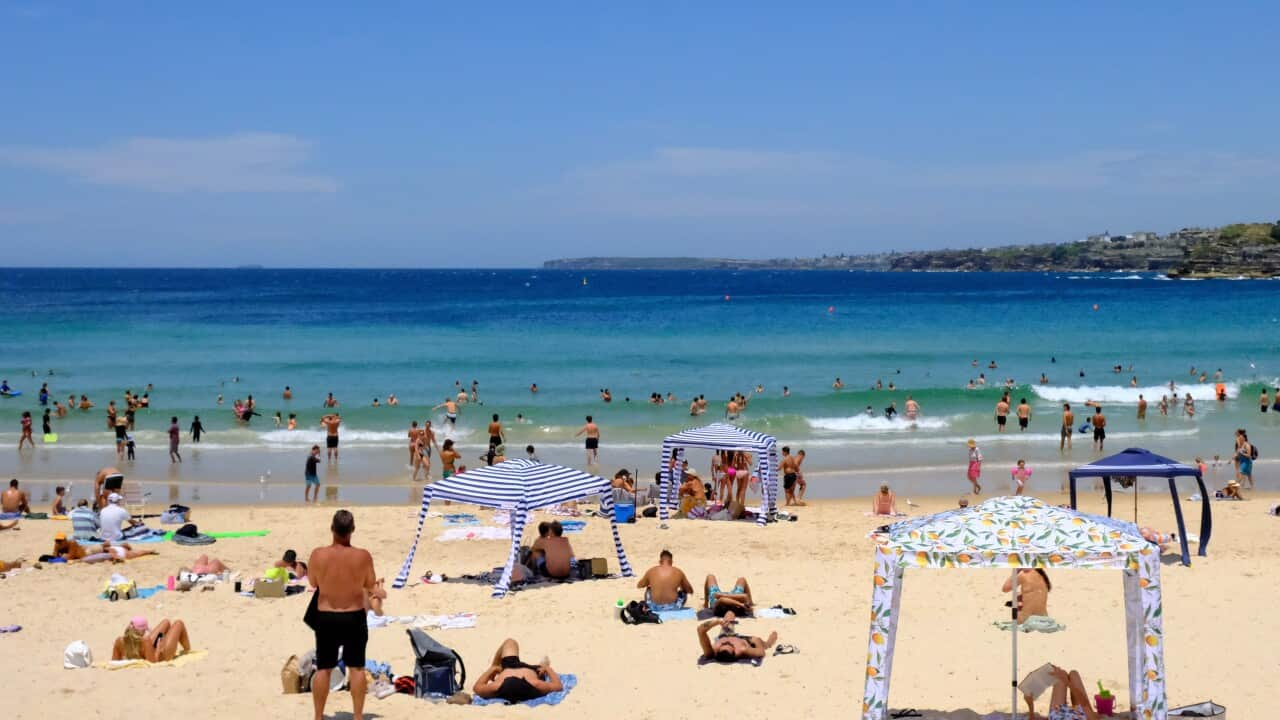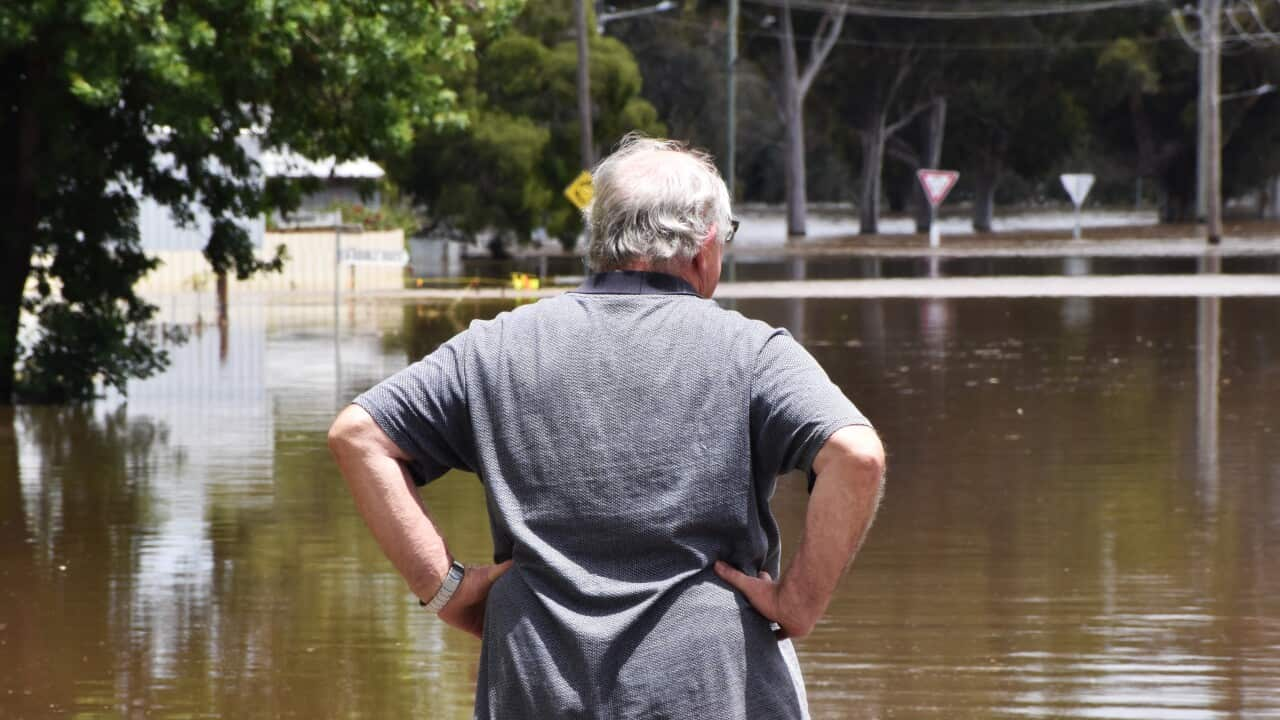Key Points
- Australia is experiencing a heatwave with temperatures in the high 40s in some areas.
- Experts say the body's ability to sweat is important in dealing with the heat.
- Tips to beat heat stress include staying hydrated and seeking shade.
Temperatures are soaring to the high 40s in parts of Western Australia this weekend, while large parts of the country endure a heatwave.
While some people seem to cope with extreme heat with ease, others can find it extremely taxing - and in some instances dangerous.
Health experts explain why that's the case.
Different bodies react differently
Physiology Professor Dr Gordon Lynch at Melbourne University said individuals cope in different ways to hot weather.
Dr Lynch said a person's ability to sweat "efficiently" plays a part.
"The ability to cope with hot weather depends on being able to sweat efficiently and to increase blood flow to the skin," he said.
"Both mechanisms help cool the body."
Dr Lynch said body weight and size impact one's cooling efficiency.
"Larger and heavier bodies tend to be less efficient with these cooling mechanisms, so the hot weather can often be more challenging if you’re overweight," he said.
"Some health conditions can also affect the body’s ability to cope in hot weather by disrupting these mechanisms, including pregnancy and menopause, diabetes, some genetic disorders, and some cancers. Some medications can also interfere."
Young children, older people more vulnerable
Cardiologist Dr Arnagretta Hunter at the Australian National University told SBS News that extreme heat can be dangerous.
"Heatwaves are the natural disaster with the highest mortality in Australia," she said.
"High temperatures over 35+ degrees (Celsius) can place our bodies under stress, and with prolonged heat stress this can cause serious health impacts including heart failure, confusion and renal failure and death."
LISTEN TO

Could your new sofa help stop climate change?
SBS News
09/02/202306:43
Dr Hunter said some people are more vulnerable to heat.
"Very young children and elderly people are vulnerable," she said.
"Young people because they can dehydrate quickly and older people because sometimes the physical symptoms of heat stress aren't as obvious."
She said the impacts of heat stress may not be noticed at the time but it can cause confusion and impair decision-making.
She warned that "even young, healthy people" can experience heat stroke and the health impacts of heat when they spend time in hot conditions, "particularly if they don't have access to adequate cooling and hydration".
How to stay prepared
Dr Lynch said hydration is key for protection.
"It is important in hot weather to stay well hydrated and to replace the fluids lost from sweating, especially if you’re outdoors and exercising," he said.
"Don’t just rely on feeling thirsty and drink water throughout the day, helping to prepare the body for when the temperature rises."
Dr Hunter said people should find shade and cool spaces to take shelter.
"To be protected from heat impacts we need to seek cooler spaces and cooling," she said. "Shade, fans or air conditioning, water to avoid dehydration are all important.
"The cost of electricity can impact on our cooling choices - for example when to turn on air condition. Access to housing and type of housing impacts access to cooling during heat.
The Cancer Council's skin cancer awareness campaign includes five elements: slip on a long shirt, slop on sunscreen, slap on a hat, seek shade and slide on sunglasses.
What parts of Australia will be the most impacted?
People in West Australia are sweltering through a severe heatwave, with temperatures soaring to the high 40s in northern parts of the state.
The Pilbara region hovered around 30C on Friday night, with the Bureau of Meteorology warning temperatures could rise to 48C in coming days.
A high fire danger rating has been issued for large parts of WA on Saturday, with residents told to be prepared.
"We have a heat trough stalling over that area," bureau meteorologist Miriam Bradbury told the ABC.
"It's a weather system which isn't going anywhere fast and the heat is really just circulating over the area, stagnating. We haven't had a strong system to clear it all.
"That heat over the past few days has started to slide south-eastwards towards South Australia, Victoria, Tasmania and NSW."

Heatwave conditions are forecast to stretch into Thursday. Credit: Bureau of Meteorology
"We are going to see some relief about those southern and central NSW coastal areas tomorrow," Ms Bradbury said.
"Northern NSW, southern Queensland and WA are just going to hang onto that heat with a fresh burst moving across the southeastern states from the middle of the week."
Further south, there is a brief heatwave reprieve in Victoria after Melbourne recorded its hottest day since January 2020.
The city reached a top of 40.5C at 3.47pm on Friday before rapidly dropping to 27.6C by 4pm.
Temperatures will not exceed 23C in Melbourne on Saturday but another heatwave is forecast for the state late next week.
With additional reporting by AAP











